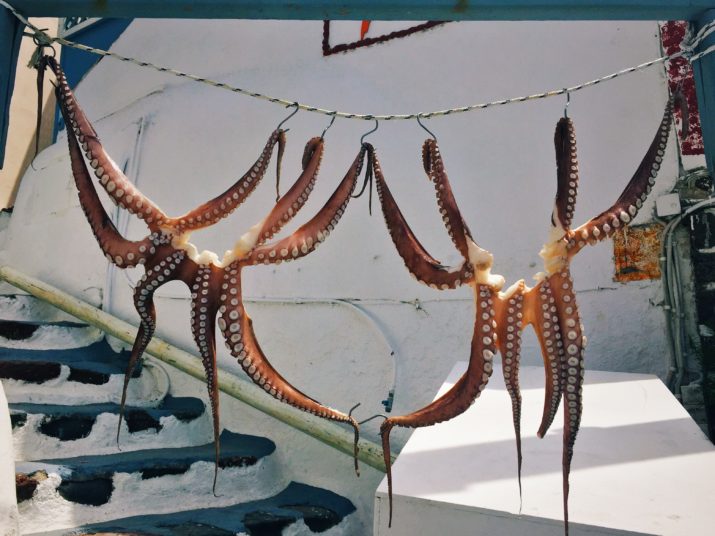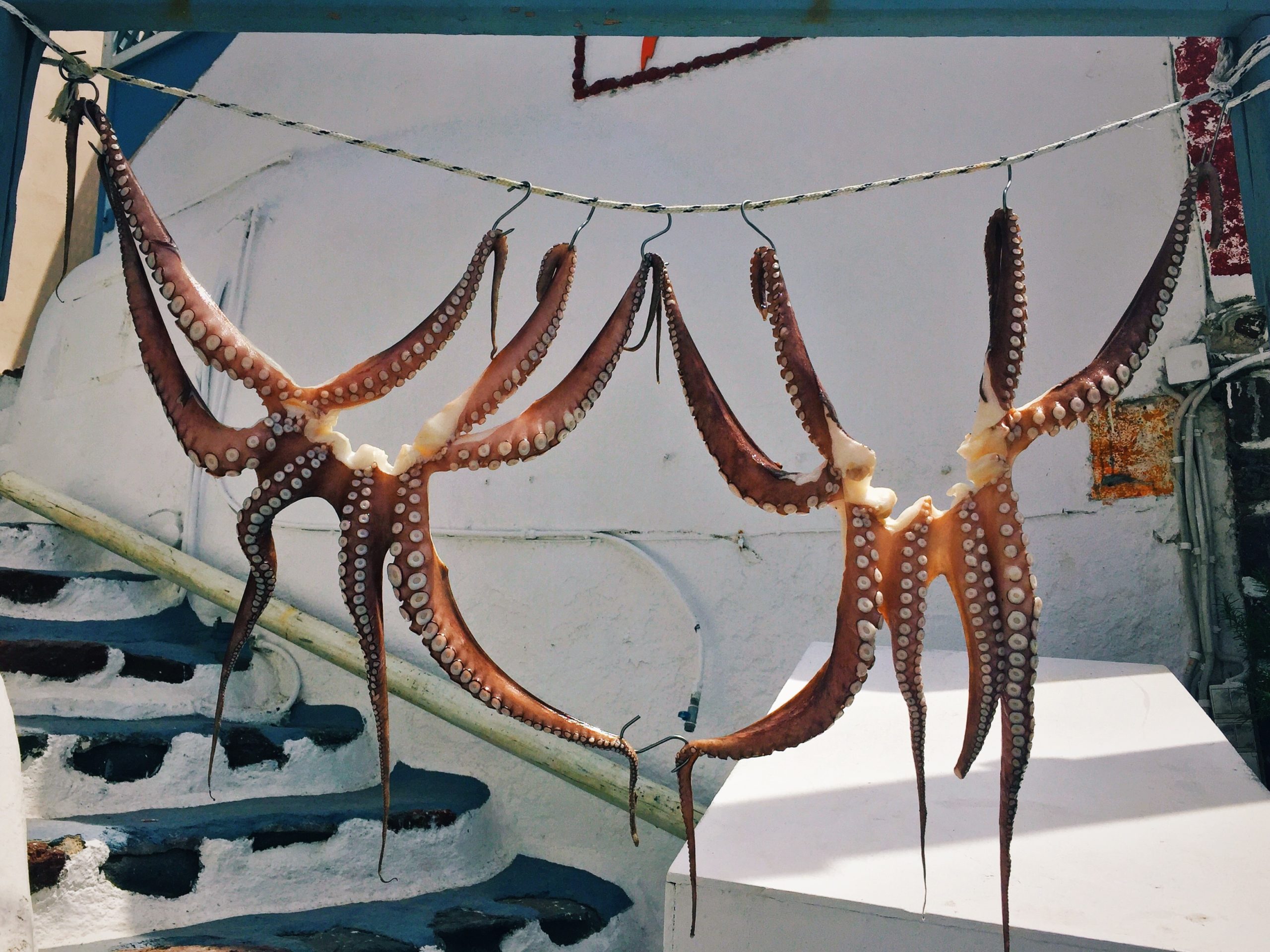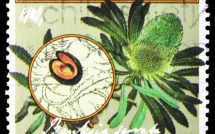

This is part of our special feature, Rethinking the Human in a Multispecies World.
The documentary film My Octopus Teacher (2020), directed by Pippa Ehrlich and James Reed, depicts the exceptional relationship between a free-diver and a common octopus in a South African kelp forest. The film was an immediate success because, among other reasons, it depicts the complexities of octopus lives and poetically shows the possibilities of attachment and attunement to these relatively unknown creatures. The film recently found its way to the UK House of Lords, when, calling for the extension of the Animal Welfare (Sentience) Bill (HL Bill 4) to include invertebrates, Barbara Scott Young, Baroness Young of Old Scone, urged the drafters to view the award-winning documentary, “which explores the rather bizarre and strange but nevertheless emotional relationship between a man and an octopus.”[1]
UK Animal Welfare (Sentience) Bill recognizes that all vertebrates are “sentient” creatures. According to its drafters, “sentience is about animals having feelings, both positive and negative, such as pain or joy.”[2] The bill empowers the Secretary of State to extend it to invertebrate species based on scientific evidence, which some MPs have argued, is strong enough to justify the inclusion of cephalopods (squid, octopus, cuttlefish, and nautilus) and decapod crustaceans (crayfish, crabs, and lobsters) in the bill. Concretely, one possible consequence of such a move, explained a reporter in The Times, would be the outlawing of boiling lobsters alive.[3] The plausible inclusion of cephalopods and crustaceans in animal welfare legislation reveals the central role of science in shaping the moral and legal obligations towards nonhuman animals. This role was assigned to scientific experts when, around the mid-nineteenth-century, pain became the central moral criteria in animal ethics. Of course, other cultural and social factors have also played a part in extending animal welfare laws to certain invertebrates. These include, among others, a rising ecological consciousness, transformations in the perception of wilderness, and ideas about humans’ responsibilities towards—and dependency upon—sea creatures. In today’s historical moment, these circumstances make the scientific evidence about invertebrates’ pain ethically suggestive.
For decades, sentience was a way to fence off certain species from the law’s protection, allowing only vertebrates the few protections that animal welfare laws provided. However, in the second half of the twentieth century, new scientific knowledge about invertebrates’ pain and intelligence set the conditions for changing the old legal classifications of protected animals. The mounting evidence led ultimately to the inclusion of animals that were never considered before, such as octopus, in the regulations on the use of animals in science in the UK and the EU. Today, we witness its widening to other animal welfare laws. I focus here on the British context, which became a favorite choice for historians investigating the shifting relations between humans and other animals. This is, among other reasons, because in British society the move from disinterest in animals’ fate to a national concern was evident and even radical during the early nineteenth-century. English legal doctrines such as the definition of the offense of cruelty as the infliction of unnecessary suffering, and regulative structures such as the administrative oversight over animal experimentation, have inspired similar legislation across the globe.
British lawmakers have long defined pain as the leading moral criterion in modern animal ethics and animal law in particular. While this may seem reasonable and predictable to contemporary readers as the basis for human-animal relations, as a basis on, it is only a development of roughly the last two centuries. In antiquity, the debate about animal ethics centered on the rationality of animals or lack thereof. Only rarely, and relatively late, did the Greek philosophers mention pain as a reason for treating animals well. Reason continued to be the distinguishing trait between humans and nonhumans for early modern thinkers. However, the notion that animals could feel pain was not a nineteenth-century discovery. Despite René Descartes famously analogizing animals to machines, and their agony cries to the sound of a broken clock, the majority of the French Academy ignored the beast-machine theory, as most anatomists came to believe that animals could indeed feel pain, even though they lacked a soul. Since for centuries the possession of a soul had been considered the defining element for moral consideration of humans or animals, the transformation of moral criteria from a rational soul to pain shifted the relevant expertise to scientists who were thus given a new role: to identify and quantify animal sentience—a preliminary step for providing them with legal protection.
Nonhuman pain
But what is pain? Having a certain idea of pain, a way to detect it, measure it, and talk about it, have been fundamental questions for anyone engaged with cruelty to animals’ laws, be the person a policeman, a scientist, a civil servant, or an animal lover. Nevertheless, for decades, animal welfare laws did not define “pain,” leaving that task for bureaucrats, scientists, activists, and jurists to debate. Some scholars portray (human) pain as an experience that is before and beyond verbal expression. Pain, in this view, is a private, inherently untransmittable experience.[4] Others, however, claim that pain is constantly shared among us (humans) through imagination and identification.[5] Despite pain being an existentially absorbing experience for the individual, defining and even experiencing pain has political dimensions. Indeed, pain is a social matter that generates solidarity, and an object of governance that is to be located, treated, or manipulated by health and welfare institutions.
Medical organizations today combine subjective experience and objective indicators in the definition of pain. For the International Association for the Study of Pain (IASP), it is an “unpleasant sensory and emotional experience associated with, or resembling that associated with, actual or potential tissue damage.”[6] However, the IASP complicates this definition when commenting that both the physiological and demonstrative elements of this definition are not obligatory. The IASP differentiates between the phenomena of pain and nociception, advancing the claims that “pain cannot be inferred solely from activity in sensory neurons,” and that “verbal description is only one of several behaviors to express pain; inability to communicate does not negate the possibility that a human or a nonhuman animal experiences pain.” Two centuries of the systematic scientific study of pain led researchers to incorporate its intractability into its definition. According to the IASP, other creatures’ pain cannot be inferred only by the activity of their sensory neuron, but it is also not necessarily communicable. In other words, neither the objective (scientific) manifestation of pain nor its subjective expression is necessary to determine its existence.
The difficulty in recognizing pain and evaluating its intensity comes to its extreme when the inarticulate animal is concerned. When nineteenth-century French physiologist Claude Bernard designed an experiment to determine whether a paralyzing substance named “curare” had anesthetic effects, he explained that “in the animals, one can judge sensitivity only by motor manifestations. Man alone, on recovering from poisoning by curare, would be able to say, supposing that he had retained the memory, whether or not he had suffered.”[7] Without the verbal testimony, there was no way other than resorting to motor manifestations of pain. However, motor manifestations of pain and other nonverbal pronouncement were also subject to doubt. In 1883, Irish physiologist Gerald Yeo published incognito a short book entitled Physiological Cruelty: Or, Fact V. Fancy – An Inquiry into the Vivisection Question. Yeo began his inquiry with the question “what is pain?” replying that pain is a personal experience, and stating that “as a matter of fact, we know nothing about any pain except what we have ourselves suffered.”[8] Humans have learned to grasp each other’s pain, but “we lose ourselves at once” when confronted with the pain of animals.[9] Yeo claimed that signs of pain produced by animals were vague and neither proved the existence of consciousness nor disclosed the degree of feelings. Moreover, motions, cries, and struggles should not be considered reliable signs of pain because of the reflex action. Nonprofessional attempts to empathize with animals were useless from this perspective, but during the twentieth century a new approach strengthened that prioritized scientific expertise in testifying on animal pain and induced the changing classifications of protected species.
“Any vertebrate other than humans”
Efforts to outlaw cruelty to animals were already underway at the turn of the nineteenth century. However, while animal sentience made them eligible for legal protection early on, it took a while before the capacity to feel pain guided lawmakers in deciding which animals would be protected under anti-cruelty laws. The first laws provided detailed lists of protected animals. The Act to Prevent the Cruel and Improper Treatment of Cattle (1822) made it an offense to cruelly treat “any horse, mare, gelding, mule, ass, ox, cow, heifer, steer, sheep and other cattle.” An 1835 law extended the list of protected animals to dogs and other cattle or domestic animals. In 1849, the Act for the More Effectual Prevention of Cruelty to Animals added cats to the list. Six years later, the law was amended again to include all domestic animals. The English courts, which interpret the laws, have clarified what made animals domestic. According to an 1881 ruling, “domestic animals are such as live in or near the habitation of man, and are tame as distinguished from wild.”[10] In an 1894 case involving the alleged abuse of circus lions, the justice explained that the act “intended to comprise all such animals as have been tamed to serve some useful purpose for mankind […] The mere caging and keeping in captivity an animal is not enough to make it a domestic animal.”[11] Here, we see how the relationship with the animals, rather than their physiological structure or sentience, was central in defining which species would gain protection. This line of thought guided the courts throughout the twentieth century, and in 1964 a High Court judge defined domesticity in terms of dominion.[12] This classification method (aside from legitimizing most methods of Aristocratic hunting) allowed for flexibility in defining protected animals. Different animals could move between the wild and domestic categories, consequently covered or disregarded by the law
Domesticity and sensitivity to pain were sometimes intertwined. In 1875, the UK Home Office summoned the Royal Commission on the Practice of Subjecting Live Animals to Experiments. Commissioner Richard Holt Hutton opined that the special relationship of trust and servitude between humans and cats and dogs rendered it immoral to turn them into instruments for scientific research. The author stressed that domestication had made cats and dogs more intelligent and sensible to pain than other species, a state he referred to as “hyperaesthesia.”[13] However, the Cruelty to Animals Act (1876), which established state oversight over experiments on living animals, defined protected animals as “any vertebrate other than human” regardless of their domesticity. The Act did not ban experiments on dogs and cats as Hutton had suggested but granted them some extra bureaucratic protection. For almost a century and a half, this was UK’s most inclusive animal law legislation.
Species protection reconsidered
For many decades, the definition of protected animals as vertebrates other than humans ruled the UK’s animal experimentation law, while “domesticity” guided the classification under the main cruelty to animals law. Signs of change emerged during the mid-century. In 1965, the UK’s Home Office’s Departmental Committee on Experiments on Animals concluded that while it was unattainable to assess degrees of pain in animals, there was “no scientific evidence that any single species was more sensitive to pain than another.”[14] Half a century earlier, the common view had been that species experienced pain differently and that wild and domesticated animals exhibited different sensibility to pain. The door for the inclusion of invertebrate species had slowly opened. Although already in the 1970s, lawmakers cited octopus’ highly developed neurological system in parliament, it took another two decades for this knowledge to impact the classification of protected animals. In 1980, the UK’s Home Office established the Select Committee on the Laboratory Animals Protection Bill in 1980. At the time, the late Patrick Bateson, the then president of the Association for the Study of Animal Behaviour, opined that the list of protected species should be extended to include “all those that current neurological and behavioural knowledge suggest have complex nervous systems and are sentient,” such as the octopus.[15] This insight, however, did not find its way to the lawbook in the 1980s.
In fact, the UK’s legislation was delayed since, at the same time, the European Council was working on a convention for the protection of vertebrate animals used for experimental and other scientific purposes. While the UK’s delegation was active at the Council in drafting the convention, there was also some national tension. For example, MP Earl of Halsbury emphasized the importance and the need for Britain to show leadership in animal welfare legislation. The MP further stressed that waiting for Europe to legislate undermined Britain’s pioneering position on animal welfare issues and that Strasburg should instead learn from the UK’s century-old experience at regulating animal welfare. Nonetheless, in spite of the setback, the UK’s Advisory Committee on Animal Experiments recommended in 1981 the redefinition of protected species, prioritizing the species’ capacity to feel pain. The committee concluded that new legislation should extend to all vertebrates that have attained such a stage of development that they are capable of a discrete existence outside of the egg or maternal tract. [16]
The Advisory Committee expressed its will for legislative flexibility that would extend the law’s protection to a wider range of sensate creatures, with some commissioners stating that it would also be appropriate to protect certain non-vertebrate forms, such as octopuses and crustaceans, under animal experimentation laws. This contemplation coincided with the arising of questions about the special legal status that had been granted to cats, dogs, and horses under nineteenth-century legislation. The committee acknowledged the public’s feelings towards companion animals who stand in a special relationship of trust with humans, yet claimed that there was no reason to suppose that these animals were any more sensitive to suffering than others. Nevertheless, the Animals (Scientific Procedures) Act 1986 defined, again, protected animals as “any living vertebrate other than man.” The same year, EU Directive 86/609/EEC presented a similar definition.
In the last three decades, the UK and the EU revolutionized their legal classification of protected species. In 1993, the UK amended the Animals (Scientific Procedures) Act to include one invertebrate species, the common octopus (Octopus vulgaris), “from the stage of its development when it becomes capable of independent feeding.”[17] The key Animal Welfare Act (2006) covered, again, “vertebrates other than man,” since “these are currently the only demonstrably sentient animals.”[18] Nevertheless, the Act made provisions for the appropriate national authority to extend the Act to cover invertebrates based on scientific evidence. EU Directive 2010/63/EU on the Protection of Animals Used for Scientific Purposes included, for the first time, cephalopods, based on the “scientific evidence of their ability to experience pain, suffering, distress and lasting harm.”[19] UK law was further revised accordingly.
These days, we witness the adoption of the comprehensive attitude in animal welfare laws, which covers both vertebrates and invertebrates. As recently as February 2021, the Scottish Animal Welfare Commission stated that cephalopods and decapod crustaceans are “animals for which the threshold for sentience has been exceeded.”[20] Therefore, it is reasonable to assume that the Animal Welfare (Sentience) Bill could eventually recognize their sentience. This move would make UK animal welfare regulation coherent both with existing animal experimentation law and with established scientific knowledge about animal sentience.
Shira Shmuely is an assistant professor at the Cohn Institute for the History and Philosophy of Science and Ideas, Tel Aviv University. Her recent publications include “Law and the Laboratory: The British Vivisection Inspectorate in the 1890s” (2021) in Law & Social Inquiry (April, 1–31), “Alfred Wallace’s Baby Orangutan: Game, Pet, Specimen” (2020) in the Journal of the History of Biology (53(3): 321–43), “Curare: The Poisoned Arrow That Entered the Laboratory and Sparked a Moral Debate”(2021) in Social History of Medicine (33(3): 881–97). Shmuely is now working on her book manuscript, “The Bureaucracy of Empathy: Law, Vivisection, and Animal Pain in Late 19th Century Britain.”
References
Boddice, Rob. 2017. Pain: A Very Short Introduction. New York, NY: OUP Oxford.
Fudge, Erica. 2006. Brutal Reasoning: Animals, Rationality, And Humanity in Early Modern England. Ithaca, N.Y: Cornell Univ Pr.
Guerrini, Anita. 2015. The Courtiers’ Anatomists: Animals and Humans in Louis XIV’s Paris. Chicago ILL: University of Chicago Press.
Ritvo, Harriet. 1987. The Animal Estate: The English and Other Creatures in the Victorian Age. Cambridge, Mass.: Harvard University Press.
Smith, Jane A., Paul LR Andrews, Penny Hawkins, Susanna Louhimies, Giovanna Ponte, and Ludovic Dickel. 2013. “Cephalopod Research and EU Directive 2010/63/EU: Requirements, Impacts and Ethical Review.” Journal of Experimental Marine Biology and Ecology 447: 31–45.
Sorabji, Richard. 1995. Animal Minds and Human Morals: The Origins of the Western Debate. Ithaca, N.Y: Cornell University Press.
[1] HL Deb, 16 June 2021, c1901
[2] Animal Welfare (Sentience) Bill [HL] Vol. 812, 16 June 2021.
[3] Courea, Eleni. 2021. “Ban on Boiling Lobsters Alive under Plans to Boost Welfare Rights of Crustaceans and Molluscs.” The Times, July 7, 2021, sec. news. https://www.thetimes.co.uk/article/ban-on-boiling-lobsters-alive-under-plans-to-boost-welfare-rights-of-crustaceans-and-molluscs-jpx2whf0v.
[4] Scarry, Elaine. 1987. The Body in Pain: The Making and Unmaking of the World. Oxford University Press, USA.
[5] Bourke, Joanna. 2014. The Story of Pain: From Prayer to Painkillers. New York, NY: Oxford University Press.
[6] https://www.iasp-pain.org/resources/terminology/#pain. Accessed 6 October 2021.
[7] Bernard, Claude. 1968. “Leçons Sur Les Effets Des Substances Toxiques et Médicamenteuses.” International Anesthesiology Clinics 6 (2): 431–70, 447 (original text can be found here: https://ia600906.us.archive.org/28/items/leonssurleseff00bern/leonssurleseff00bern.pdf)
[8] Philanthropos. Physiological Cruelty, Or, Fact V. Fancy: An Inquiry Into the Vivisection Question. John Wiley and Sons, 1883. p. 4.
[9] Ibid., p. 5.
[10] Swan v. Sanders, (1881) 50 L.J. 67 (Q.B).
[11] Harper v. Marcks, (1894) 2 Q. B. 322.
[12] Rowley v Murphy, [1964] 1 All ER 50 [1964] 1 All ER 50.
[13] Report of the Royal Commission on the Practice of Subjecting Live Animals to Experiments for Scientific Purposes; with Minutes of Evidence and Appendix (London: Eyre & W. Spottiswoode, 1876), p. xxii.
[14] Littlewood, Sydney, United Kingdom, Home Office, and Departmental Committee on Experiments on Animals. “Report of the Departmental Committee on Experiments on Animals.” London: Her Majesty’s Stationery Office, 1965, p. 60.
[15] Letter from the President of the Association for the Study of Animal Behaviour, 21 February 1980, Report of the Select Committee, vol. 2, p. 242.
[16] Advisory Committee on Animal Experiments, Report to the Secretary of State on the Framework of Legislation to Replace the British Cruelty to Animals Act 1876 (London: 1981), p. 1, 12.
[17] Animals (Scientific Procedures) Act (Amendment) Order 1993.
[18] Explanatory Notes, Animal Welfare Act (1986) (C.45).
[19] European Directive 2010/63/EU, Section 8.
[20] Scottish Animal Welfare Commission: Statement on Snimal Sentience, https://www.gov.scot/publications/scottish-animal-welfare-commission-statement-on-animal-sentience/, accessed 8 August 2021.
Photo: Oia, Santorini, Greece – Octopuses are being dried under the summer Sun | Shutterstock
Published on November 9, 2021




